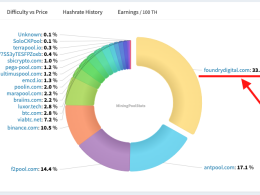Minswap is a decentralized exchange (DEX) project. The purpose of a DEX is to allow the exchange of pairs of tokens, without permission from an authority.
Minswap aims to be the best liquidity provider on the market, integrating the best asset pool models from the entire DEX ecosystem into a single protocol. The combination of Stable pool, Multi-asset pool, Constant-product pool and Dynamic pool will benefit both traders and liquidity providers.
Minswap tokens will be distributed equally, without any private or Venture Capital investment. MIN token holders can participate in governance, voting democratically on protocol changes.
For each trade, a commission is charged, which goes to liquidity providers, through the process known as Yield Farming. Any person holding tokens can provide liquidity to each liquidity pool (LP), according to the tokens they hold.
Thus, with public participation and without permission, the decentralized format comes to life.
Minswap has pioneered several ideas in the Cardano ecosystem, such as the FISO model, (Fair ISO), touted as the fairest ISO model in the Cardano community.
Traditionally, centralized exchanges with order books have been backed by market makers, which are usually large trading companies or brokerage houses with huge capital, financial knowledge, and regulatory compliance.
These market makers facilitate high liquidity on centralized exchanges, making profits through the trading spread (between bid and ask prices).
However, the DeFi boom for decentralized exchanges has popularized the concept of Automated Market Maker (AMM), which allows individual retailers to easily become market makers, and profit from trading fees.
In a DEX AMM, the individual liquidity providers are the market makers.
Traders can trade tokens in these liquidity pools based on a deterministic algorithm. Although convenient and suitable for smart contracts, AMMs also have their own classes of problems to be solved, namely impermanent loss, low capital efficiency, and front-running.
On the other hand, oracles are necessary tools in AMM DEXes, to provide the quote price of a pair, without consulting and having to trust an entity. Taking the information from several reliable sources, off-chain, the oracles provide on-chain the necessary data for the operation. Arbitrage bots intervene to quote the price of AMM at the market price, according to the law of one price.
Minswap Different Approach to Liquidity Pools
Minswap is designed to build different models of LPs (liquidity pools).
In an LP only a couple of tokens are traded. Each LP can have only one pricing model. There can be multiple LPs for the same pair of tokens, each with a different model.
Liquidity providers have the option to choose the optimized LP for a specific pair of tokens, which yields the highest returns and capital efficiency. At first glance, it seems that this can lead to liquidity fragmentation. However, liquidity providers will naturally direct their capital towards the most efficient pool for a specific pair because that pool is the most traded.
Let’s take a look at the different models:
Constant-product pool
Constant pricing curve works well for MOST pairs impermanent but incurs some loss for inverse-correlated pairs (ie That pair have prices moving in opposite directions). The pricing function on a constant-product pool is really simple: xy = const. UniSwap popularizes the concept of a constant-product market maker.
Stable pool
It is the combination of constant-product and constant-sum functions with a dynamic ”amplification coefficient”. Curve has found out that there is a better function for stable pairs (i.e. pairs that are similar in price, mostly pegged to an external asset like BTC or USD).
Multi-asset pool
It allows creating a pool with any amount of any number of assets, instead of limiting the LPs to provide an equal amount of two assets. This basically means that an LP can provide their entire portfolio as it is and get it automatically re-balanced while earning fees. Balancer generalizes the concept of constant-product function to more than two assets.
Dynamic pool
The concept is called Dynamic Market Making (DMM). With DMM, the ”amplification factor” is programmed based on a pair’s inherent volatility. It also introduces a better fee mechanism where trading fee is adjusted dynamically based on trading volume and price volatility. Kyber extends Curve’s ”amplification factor” from stable pairs to other pairs in general.
Automated Yield Farming strategy created by the community, like those of Yearn Finance, will also help LPs to rebalance their capital in the most efficient LPs.
By having different LPs with different pricing models, to move liquidity, trading will be faster and cheaper because all pools are on a single platform (Minswap DEX).
Building an AMM, with provision for multiple pool features will also lead to a seamless integration of the best ideas from the community without having to do a hard-fork or large migrations.
Tokenomics
MIN tokens are distributed with an allocation of 21.5% to the team and the Development Fund.
78.5% of tokens will be distributed to the community, of which 70% are reserved to reward LPs, ensuring our community of users is maximally rewarded, not speculators and insiders.
The treasure will keep 6% and 2.5% will be allocated for airdrops.
The way to acquire MIN tokens is to have participated in the FISO, or participating in the protocol by providing liquidity, when you are operating on the mainnet, or trade directly on Minswap. There will also be an airdrop, as an exception, to reward incentivized testnet participants.
After an initial proposal and discussion on the governance forum, Minswap decided to move forward with a public sale. The total public sale amount was 0.5% of the token supply equalling 25 million MIN tokens. The 0.5% was taken from dev fund allocation.
There are two types of tokens:
- MIN Tokens: These are the standard tokens, those received in FISO distribution and as rewards to liquidity providers who delegate their tokens to LP.
- MINt tokens: 5 million MINt will be distributed via airdrop to those who participate in the testnet. MINt can be converted into MIN tokens providing liquidity exclusively to the MIN/ADA pool. This will generate a MINx/ADA token that is locked for 45 days. MINx instead of MIN indicates a reward multiplier, which increases the regular MIN/ADA LP participation rewards. After 45 days, these can be redeemed for the underlying regular ADA or MIN tokens. Redeemed MIN tokens will be released on a 45-day linear vesting schedule.
Roadmap
The next milestone is January 25, 2022, the official date for the launch of the testnet, in its 2nd edition.
Governance
From the beginning, Minswap will have an online user interface and a simple voting procedure for MIP (Minswap Improvement Proposal), similar to BIP, CIP or EIP. Being a community-oriented project from the beginning, new changes will be proposed and discussed with the community through the MIP process.
To mitigate concerns about the use of the Minswap community treasury, before governance is fully effective, a number of measures have been put in place, including locking funds in multisig wallets, public and audited smart contracts that they maintain treasury funds, a transparent process when key protocol changes are made, and clear and fair vesting.
The first phase of MIP implementation is informal, due to technical and practical limitations.
The initial informal governance system consists of a forum for community members to submit MIPs and participate in the vote.
Voting on proposals is based on forum accounts, and one account will equal one vote.
Given the lack of Sybil resistance in this process, proposals that exceed a predetermined vote threshold will be non-binding and will go into a proposal repository and will be the first proposals to be voted on when Sybil-resistant instant voting takes effect. The voting order of the informal MIPs in the repository will be determined by the total number of votes received.
Formal governance will occur off-chain with an instant voting system. Initially, only proposals posted on the instant voting system by the core team can be considered binding if approved with a quorum. After six months of formal government, this changes and any proposal is binding if it is approved with a quorum. At this point, proposals from the informal PIM repository that were approved during the first six months, but not implemented, will be put to the vote again.
Major structural changes and use of the Development Fund wallet will be voted on by the community, whereas smaller changes affect operations, as well as MIN emission changes to Minswap farming pairs, will be decided on by the core team. Smaller operational changes shall be voted on and implemented, though they will only be binding for 90 days before being subject to change without a vote.
Audit
Audits are necessary for the security of all development. Tweag will perform the external security audit of the DEX smart contract.
Tweag is a software innovation lab specializing in Haskell development that worked with IOHK on the architecture and design of the Cardano Smart Contracts Plutus platform.
Tweag will manually analyze your code in an attempt to locate potential problems. This will be done by applying lightweight formal methods that ensure key system components are built to specification and bugs are found and removed transparently.
Team
Its three co-founders are Nguyen Le Vu Long, Hieu Phan and Richard Nguyen.
You can see the full team here.
The members of the team say that they have experience working in large companies such as Amazon Web Services (AWS), GHTK and contributing to large open source projects such as Jenkins, Kubernetes, Prometheus, and having received the Innovation Award at the NEO Hackathon Tokyo, thus demonstrating knowledge about DeFi and blockchain.
They also say that they were part of the Plutus Pioneer program.
Whitepaper: https://docs.minswap.org/whitepaper
Github: https://github.com/minswap
Website: https://minswap.org/
In the second part of this article, I will explain the FISO model, used for the initial distribution of tokens, and Laminar, the protocol for the Minswap DEX.










